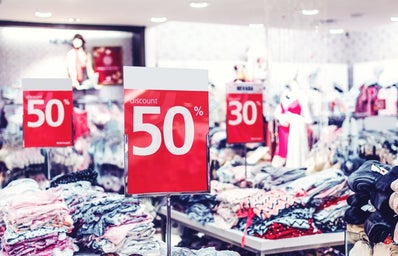For the past few years, the topic of sustainable fashion has been of increasing importance. Nowadays, most people know about the issues revolving around fast-fashion and how detrimental the latter can be for the planet, as well as for the people who produce it. All this has been addressed in numerous articles and documentaries, such as ‘The True Cost’ by Andrew Morgan. However, an interrogation that is rarely addressed in the media, or in society in general, is why sustainable fashion is also a feminist issue.
At first glance, both topics don’t have a lot in common, which can lead us to believe that feminism and sustainable fashion are two separate issues. But if we dig deeper, we realise that they are intertwined in many ways:
The individuals suffering the most from the fast-fashion phenomenon are women
The fast-fashion industry is mostly run and fuelled by women, which means that, indirectly, they are the ones mostly affected by our excessive consumption; 80% of textile factory workers are women [1]. In countries where fashion is the main employer, this figure can even go up to 90%, like in Cambodia [2].
By now, it is not a secret that the working conditions in the factories that produce our clothes, mostly located in South-East Asian countries such as Bangladesh or Vietnam, or in East African countries such as Ethiopia, are beyond terrible and against human dignity. The workers work an excessive number of hours for extremely poor wages. Gender-based violence, such as sexual harassment, is a daily occurrence. Moreover, the infrastructures that women work in are appallingly bad, often leading to tragedies. An incident that has been heavily addressed in the media and had an international resonance was the Rana Plaza factory collapse. The disaster was caused by an infrastructural failure, killed thousands of textile workers and clearly highlighted the dangerous conditions textile workers (or shall I say, women) are exposed to. From the 1,132 people who were killed and more than 2,500 who were severely injured, most of them were women [3] and despite the international outcry shortly after the tragedy, very little has changed since.
In other words, when we buy fast-fashion, we contribute to the perpetuation of the female-run sweatshop model, which totally denies the workers of their basic human rights. Without even realising it, by doing something that we might see as a hobby or a treat, we are harming other women.
The discrepancy of female empowerment though fashion
One aspect that I thought was important to mention is the strong discrepancy of female empowerment through fashion. On the one hand, mostly in the Global North, women use clothing or fashion in general to feel more confident, enhance their personality, and generally express themselves, whilst on the other side of the world, or sometimes on the other side of the country as we saw with the sweatshops in Leicester [4], this exact same fashion makes women majorly suffer. I find this particularly contradictory when it comes to clothes with feminist slogans embroidered on them: how can an item of clothing be feminist and empowering if it put another women’s physical and mental health at risk?
Can sweatshops be empowering for women in any way?
When it comes to this subject, certain scholars, such as Benjamin Powell claim that sweatshops can be indirectly empowering, by stating that sweatshops are “part of the process that raise living standards and leads to better working conditions over time” [5]. In certain cases, there may be some truth to it. If one looks at some regions of China, one sees that because the economy has shifted from being based on producing textile to making more elaborate technological products, the working conditions, as well as the wages, have slightly improved.
However, this argument is instantly defeated when we look at how the Uighurs are treated in their “re-education” camps, where they are forced to produce clothes for western brands [6]. An extensive list of the brands that “continue to source from the region, or from factories connected to the forced labour of Uighur people” [7] has recently been published by a group of human rights activists.
Here again, gender-based violence is omnipresent: numerous human rights groups such as Amnesty International reports forced sterilisation and rape of Uighurs women. [8] This is another indirect reason why, through buying fast-fashion, we perpetuate violence towards women.
To come back to the statement made by Benjamin Powell, an important fact that he misses is that the fast-fashion model isn’t based on improving working conditions or bringing better living conditions in a region. The model of fast-fashion is based on cheap labour. When wages rise, fast-fashion brands look for countries where they can produce clothes for cheaper. For instance, brands like H&M and Levi’s are producing more and more of their garments in African countries such as Ethiopia [9], because the workforce there is even cheaper. The low production cost was also a reason why certain brands preferred to produce their clothes in sweatshops in the United Kingdom because shipping costs are increasing. This clearly shows that the concept of fast-fashion as we know it at the moment isn’t really compatible with good working conditions and wages, because brands will always look for the cheapest production option in order to keep retail prices as low as possible. This concept is also fundamentally not feminist.
In conclusion, the issues of avoiding fast-fashion and feminism are interlinked because women are the ones that carry its consequences. It is therefore important to take collective action and overthink our habit of consumption. A few of the solutions would be to turn to second-hand shops or more sustainable brands. I think it is important to have an open debate about this topic and collectively take little steps to make the fashion industry more sustainable, without pointing fingers or judging each other. In other words, reflection is the first step to progress.
So maybe the next time you’re about to buy a T-shirt with a “The future is female” slogan on it, think about how it was produced and whether everyone in the making process is as empowered as you will be when wearing it!
Sources:
[5] The True Cost (2015) by Andrew Morgan
[6] ‘Virtually entire’ fashion industry complicit in Uighur forced labour, say rights groups | Global development | The Guardian
[7] Virtually entire’ fashion industry complicit in Uighur forced labour, say rights groups | Global development | The Guardian
[8] https://www.thecanary.co/feature/2020/07/07/who-are-the-uyghurs-and-what…



